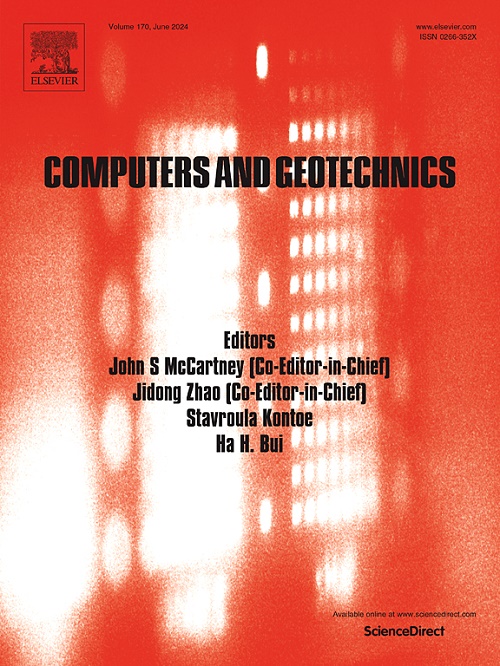Contact erosion of soil layers with different water table levels under cyclic loading using VOF-DEM coupled method
IF 5.3
1区 工程技术
Q1 COMPUTER SCIENCE, INTERDISCIPLINARY APPLICATIONS
引用次数: 0
Abstract
In the process of using transportation infrastructure, contact erosion between different particle sizes soil layers can easily occur under complex hydro-mechanical coupling, leading to deformation and damage of structures. To investigate indirect erosion between soil layers under cyclical load effects from a microscopic perspective, a volume of fluid-discrete element method (VOF-DEM) coupled method was adopted in this study. The influence of different water table levels and particle size ratios (PSR) was considered. The study found that: (1) The compressive effect of coarse particles during loading and the stress relaxation effect during unloading can both cause migration of fine particles within one loading–unloading cycle; (2) Immersion of the contact surface between coarse and fine particles is a key factor in inducing particle migration, with the interaction between particles being the most intense at the contact surface; (3) Fully saturated soil experiences the most severe particle erosion and macroscopic deformation; (4) Reducing PSR can effectively improve the integrity of soil structure and suppress erosion of fine particles; (5) Particle migration inevitably leads to axial deformation of the soil, resulting in reduced stiffness and increased energy dissipation during loading–unloading cycles. This study provides new insights into contact erosion under complex hydraulic coupling from a microscopic perspective.
求助全文
约1分钟内获得全文
求助全文
来源期刊

Computers and Geotechnics
地学-地球科学综合
CiteScore
9.10
自引率
15.10%
发文量
438
审稿时长
45 days
期刊介绍:
The use of computers is firmly established in geotechnical engineering and continues to grow rapidly in both engineering practice and academe. The development of advanced numerical techniques and constitutive modeling, in conjunction with rapid developments in computer hardware, enables problems to be tackled that were unthinkable even a few years ago. Computers and Geotechnics provides an up-to-date reference for engineers and researchers engaged in computer aided analysis and research in geotechnical engineering. The journal is intended for an expeditious dissemination of advanced computer applications across a broad range of geotechnical topics. Contributions on advances in numerical algorithms, computer implementation of new constitutive models and probabilistic methods are especially encouraged.
 求助内容:
求助内容: 应助结果提醒方式:
应助结果提醒方式:


